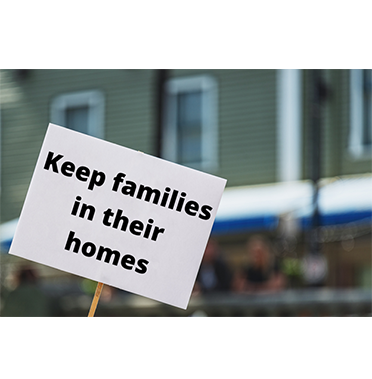About displacement after a disaster
The Urban Displacement Project defines displacement as “the process by which a household is forced to move from its residence - or is prevented from moving into a neighborhood that was previously accessible to them because of conditions beyond their control.” Both processes often occur after a disaster.
For example, recent wildfires in California have destroyed homes, apartments, and entire communities. Homeowners with insurance generally receive some money, but it might not be enough to rebuild completely. Damage and toxic ash may make it difficult and expensive to rebuild in the same spot. Renters may have insurance to cover the loss of their belongings and temporary relocation, but renter’s insurance is not common. If a rental building is destroyed, the lease is immediately terminated. If the building is habitable but needs repairs, tenants can stay but may face rising rents as landlords may want to recoup costs, especially if housing is scarce and they can do so without repercussion. There are laws against price gouging or increasing the price above 10%, but it still happens, and that cap might not be enough for tenants to remain after a disaster.
Under California law, landlords may be responsible for relocation if tenants are displaced without just cause, but they are usually exempt after a disaster. When a landlord can repair or rebuild, many jurisdictions don’t have rental ordinances that give tenants a right to return after a disaster.
If people are forced to look for other housing after a disaster, they may find skyrocketing costs, making it impossible to find new housing in their community. Disaster survivors are often forced to look elsewhere to find homes or must wait in difficult positions for Federal or other assistance of last resort to arrive.
Impact on frontline communities
Displacement after a disaster is possible for many individuals and households, especially after devastating events with lots of damage. Even well-insured families working to rebuild after the Lake County Fire in 2015 faced barriers to recovery. However, displacement disproportionately impacts frontline communities. Due to historical and current housing discrimination, people of color and low incomes are more likely to live in substandard housing, live in higher-risk areas, and live close to places with hazardous materials. These groups are also more likely to have less savings, no insurance, and less political capital to secure funding and support from government sources. A primary example is Hurricane Katrina in 2005, which caused the evacuation of nearly 2 million people. Since then, Black residents have been slower to return to New Orleans than white residents and were more likely to remain permanently displaced, as documented in Climate and Displacement from the Urban Displacement Project.
Actions to take
Community-based organizations and affordable housing providers, local government, and philanthropy should work together to achieve the following:
- Strong tenant protections:
- Rent control ordinances that cap rent increases. Include provisions for just cause eviction and relocation assistance. This will protect people against displacement pressures of all kinds, including during disasters.
- Moratoriums on evictions and foreclosures and rent freezes during disaster recovery. These actions were taken during the COVID-19 pandemic and can be enacted in other disasters, too.
- Consider a moratorium on vacation rentals to open space for people to live permanently.
- Enact a community preference policy that will give people displaced by disaster more opportunities for affordable housing. There is an example of this in Santa Monica.
- Open hotels, inns, and other similar places to house people experiencing homelessness after a disaster. Project Homekey is a great example that the California Department of Housing and Community Development could be offered to disaster-torn areas.
- Explore options to build and deploy permanent housing quicker
- There are innovative models in use for rapidly building and deploying permanent housing after a disaster. Read the RAPIDO Case Study for one example.
- Invest in Community Land Trusts (CLT)
- The Florida Keys Community Land Trust shows that CLTs can help rebuild permanently affordable rental housing in disaster-affected areas. Read the Community Land Trusts as Resilience Case Study.
- More immediate funding for long-term recovery
- Advocate for legislation that creates a revolving loan fund that can fill the gap between when a disaster happens and money from the Department of Housing and Urban Development for permanent housing.

- Toolkit